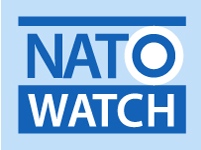By Ian Davis
6 February 2023
NATO has called on Russia to respect its treaty with the US on nuclear weapons, which contributes to international stability. NATO ambassadors said in a statement on 3 February that “we note with concern that Russia has failed to comply with legally-binding obligations under the New START Treaty”. However, the statement might carry more weight if NATO itself had not been actively undermining another nuclear treaty, the 2017 Treaty on the Prohibition of Nuclear Weapons (TPNW), at every step before and since its entry into force.
Earlier in the week, Washington said Moscow is failing to comply with its obligations under the treaty — a charge which Russian authorities have denied. “We have repeatedly pointed out to the Administration that the situation with New START is a direct result of the hybrid war unleashed by the West against our country,” Russian Ambassador to the US Anatoly Antonov said. “In the current circumstances we consider it unjustified, untimely and inappropriate to invite the US military to our strategic facilities,” he said. However, with Russia having carried out an illegal invasion of its neighbour, the Ambassador’s words are a little rich.
The New Strategic Arms Reduction Treaty (New START) was signed by Russia and the US in 2010 and is the last remaining nuclear arms control treaty in force between the two countries. It caps at 1,550 the number of long-range nuclear warheads they can deploy and limits the use of missiles that can carry nuclear weapons. It allows short-notice inspections of each other’s nuclear bases and support facilities. Russia and the US officially extended the treaty by five years on 3 February 2021.
NATO supports the treaty and believes that it helps to limit the expansion of nuclear forces. “NATO Allies agree the New START Treaty contributes to international stability by constraining Russian and U.S. strategic nuclear forces”, the statement said, adding that Russia’s refusal to hold consultations or to allow US inspections since last August “prevents the US from exercising important rights under the treaty, and undermines the US’ ability to adequately verify Russian compliance with the treaty’s central limits”.
“We call on Russia to fulfil its obligations under the treaty by facilitating New START inspections on Russian territory, and by returning to participation in the treaty’s implementation body”, the statement added. The US-Russia Bilateral Consultative Commission (BCC) formed under the treaty, and which is supposed to meet two times per year to discuss issues related to the agreement, last met in October 2021. However, Russia unilaterally suspended its cooperation with the pact’s inspection provisions in November 2022 to protest US support for Ukraine. Inspections of US and Russian military sites under the New START treaty were also previously paused by both sides in March 2020 due to the Covid 19 pandemic.
The US national security consultant, Jon Wolfsthal, said in his blog, that the decision to say Russia is not fully complying with the New START Treaty is essentially a “legalistic compliance” issue. “Russia is NOT breaking out of the treaty and does not have any more nuclear weapons than the treaty permits”, he added. However, the broader implications are gloomier. With the treaty due to expire in February 2026 there are no talks taking place for a replacement, and Wolfsthal concludes that the chances of agreeing a replacement treaty are “dim”. And “without such agreements, it is harder to plan for our own security, harder to deter our adversaries, and harder to reassure our allies”.
The situation in Ukraine has exposed the system of nuclear deterrence as highly unjust and precarious. In other words, all nuclear armed states (including those within NATO) threaten global catastrophe in a misguided attempt to deter other states. And as most of the world’s states have concluded, the goal of nuclear non-proliferation and disarmament is a safer and more secure path to take. NATO’s 2022 Strategic Concept reiterated that “as long as nuclear weapons exist, NATO will remain a nuclear alliance”, while seeking “to create the security environment for a world without nuclear weapons”. However, when it comes to nuclear arms control NATO continues to be ‘missing in action’, treating it as an afterthought rather than a guiding principle, and the Strategic Concept contained no new ideas for strengthening it.
Moreover, while the 2010 Strategic Concept contained the (unmet) commitment to “seek to create the conditions for further [nuclear] reductions in the future”, there was no such commitment in the 2022 document. With global stockpiles of nuclear weapons expected to increase in the coming years for the first time since the end of the Cold War, and the risk of such weapons being used the greatest it has been in decades, NATO needs to be doing more than simply issuing statements that reiterate the position of the United States. The assumption within NATO that the United States, France and the UK are responsible nuclear-armed states is badly misplaced. All three states have nuclear weapon modernisation programmes, with US spending on nuclear weapons expected to climb by $140 billion over the next ten years.
Because they possess the world’s two largest nuclear arsenals, the United States and Russia have a responsibility to lead by example. Ambassador Antonov has attempted to reassure that “Russia remains committed to the goals of the New START Treaty”. But it will take more than words and vague intentions. Arms control is unravelling not only because of the poor strategic relationships, but also because officials appear to have forgotten its importance. They may have also lost faith in its ability to contain capabilities enhanced by emerging disruptive technologies with dramatically different features that are difficult to quantify and verify. There is an urgent need, despite the current war in Ukraine, to develop a new architecture for arms control, part of a broader agenda to reopen discussion for a new, credible transatlantic security architecture that can strengthen confidence in security for all.
